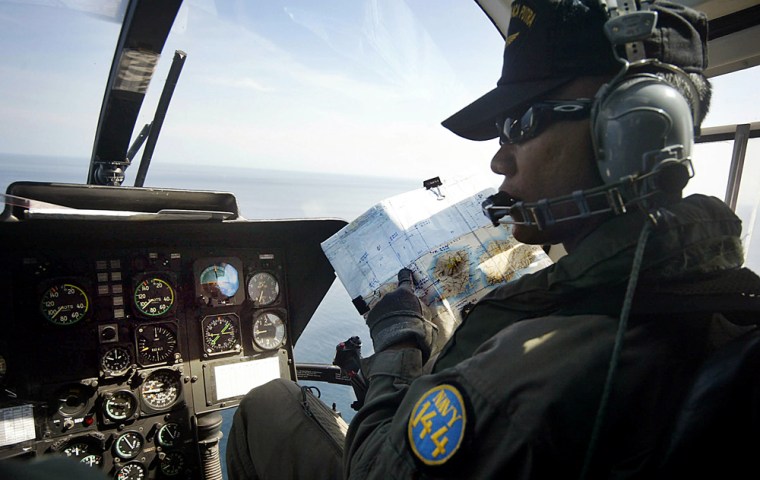Fourteen people on board a ferry that sank were picked up by a passing cargo ship after spending nine days on a life raft, a rescue official said Monday.
A 15th person died soon after being rescued by the ship late Sunday, said Ketut Purwa, head of the search and rescue agency on Bali island.
The survivors were scheduled to arrive in Makassar, a port city on Sulawesi island, on Monday evening, said Purwa, who spoke to the captain of the cargo ship by radio. They had drifted almost 370 miles before being picked up.
Indonesia’s tropical waters are generally between 72 degrees Fahrenheit and 84 degrees Fahrenheit. People have been known to survive days at sea, officials said.
The Senopati Nusantara was sailing from Borneo Island to the country’s main island of Java when it sank just before midnight on Dec. 29 after being pounded by waves of up to 12 feet high for several hours.
About 245 people have been found alive since the ferry sank, but around 400 are either dead or listed as missing. Only 10 bodies have been recovered.
“We presume hundreds of bodies remain trapped on board,” Navy spokesman Lt. Col. Tony Syaiful said.
Head of the National Search and Rescue Agency Bambang Karnoyudho said authorities plan to locate the wreck and remove the bodies.
A government investigator said Thursday she suspected the waves washed into the car deck and became trapped there, causing the vessel to capsize. Similar accidents have occurred on other “roll-on, roll-off” ferries around the world, leading to calls for a change in their design.
Ferries are a main source of transportation in Indonesia, a vast archipelago of more than 17,000 islands with a population of 220 million. Overcrowding and poorly enforced safety standards mean accidents are common.
In 2000, almost 500 people died when a ferry carrying Christians fleeing religious violence in the eastern Maluku islands capsized. A year later, 350 were killed when a boat carrying asylum seekers from Iraq and Afghanistan sank after setting sail from Java to Australia.
Indonesia has been wracked in recent weeks by seasonal storms that have triggered deadly landslides, flooding and at least six maritime accidents. A jetliner with 102 people on board disappeared last week in heavy winds and is still missing.
